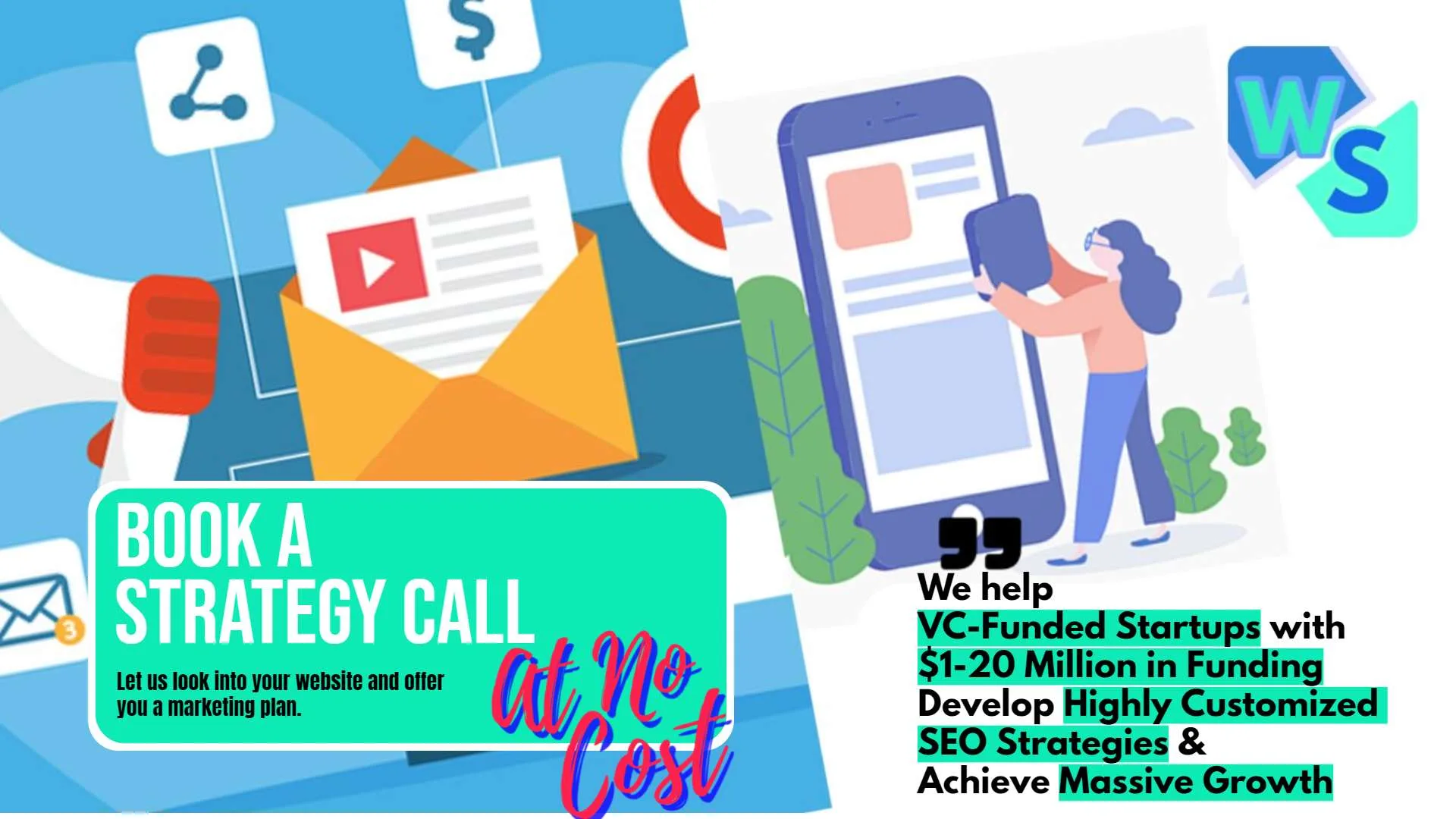Inbound marketing is all about attracting customers through valuable content and experiences tailored to them. Unlike traditional marketing, inbound marketing focuses on creating and sharing content that draws people to your business naturally. If you’re looking to improve your inbound marketing game, you’ve come to the right place. Here are seven top inbound marketing strategies that are not only effective but also easy to implement. Let’s dive in!
1. Content Marketing
Create Valuable Blog Content
One of the cornerstones of inbound marketing is content marketing. By creating valuable and relevant blog content, you can attract potential customers to your website. Write about topics that address the pain points and interests of your target audience.
For instance, if you’re in the health industry, you could write about tips for a healthy lifestyle, common health myths, or guides on managing chronic illnesses. Make sure your content is well-researched, informative, and engaging. Regularly publishing high-quality blog posts can establish you as an authority in your industry and drive organic traffic to your site.
Use Different Content Formats
Don’t limit yourself to just blog posts. Incorporate various content formats to keep your audience engaged. Create videos, infographics, podcasts, and eBooks. Videos can be particularly effective, as they are highly engaging and easily digestible.
Infographics can simplify complex information and make it visually appealing. Podcasts are great for on-the-go listeners. Offering diverse content can cater to different preferences and increase your reach.
Optimize Content for SEO
Search engine optimization (SEO) is crucial for making your content discoverable. Use keyword research tools to find out what terms your audience is searching for. Incorporate these keywords naturally into your content, including headings, meta descriptions, and image alt texts.
Make sure your website is technically optimized, with fast loading times and mobile responsiveness. High-quality, SEO-optimized content can improve your search engine rankings and attract more organic traffic.
2. Social Media Marketing

Develop a Consistent Brand Voice
Establishing a consistent brand voice across all your social media platforms is crucial for building a recognizable and trustworthy presence. Your brand voice should reflect your company’s values and resonate with your target audience.
Whether your tone is professional, casual, humorous, or inspirational, ensure it is consistent in every post, comment, and interaction. This consistency helps build a strong brand identity that your audience can connect with.
Create a Content Calendar
Planning your social media content in advance ensures a steady stream of posts and helps maintain consistency. Develop a content calendar that outlines what type of content you will post, when you will post it, and on which platforms.
Mix different content types such as blog posts, videos, infographics, user-generated content, and promotional offers. A well-planned content calendar ensures you cover various topics relevant to your audience and keeps your social media activity organized and strategic.
Engage with Your Audience
Engagement is key to building a loyal community on social media. Respond to comments, messages, and mentions promptly. Ask questions and encourage your followers to share their thoughts and experiences.
Host live Q&A sessions or AMAs (Ask Me Anything) to interact with your audience in real time. Show appreciation for your followers by acknowledging their contributions and feedback. High engagement rates can boost your visibility on social media algorithms, increasing your reach.
Utilize Hashtags Strategically
Hashtags can significantly increase the discoverability of your posts. Research and use relevant hashtags that your target audience is likely to follow. Create a branded hashtag unique to your business to encourage user-generated content.
Avoid using too many hashtags, as it can make your posts look spammy. Instead, focus on a mix of popular, niche, and branded hashtags to maximize reach and engagement.
Leverage Influencer Partnerships
Collaborating with influencers can expand your reach and add credibility to your brand. Identify influencers in your industry who align with your brand values and have a genuine connection with their followers.
Partner with them to create sponsored content, product reviews, or joint live sessions. Influencer marketing can introduce your brand to a broader audience and drive high engagement. Ensure the partnership feels authentic and adds value to both the influencer’s audience and your own.
Run Contests and Giveaways
Contests and giveaways are effective ways to boost engagement and grow your social media following. Create contests that encourage participants to share your content, tag friends, or create their own content related to your brand.
For example, a photo contest where followers share pictures using your product with a specific hashtag. Offer attractive prizes that are relevant to your audience to maximize participation. Contests and giveaways can increase your brand visibility and create a buzz around your products or services.
Analyze Competitor Strategies
Keep an eye on what your competitors are doing on social media. Analyze their content, engagement rates, and follower growth. Identify what’s working for them and what’s not. Use these insights to refine your own social media strategy.
Look for gaps in their approach that you can fill to differentiate your brand. Competitive analysis helps you stay ahead and adapt your strategies to changing trends and audience preferences.
Use Stories and Reels
Platforms like Instagram, Facebook, and LinkedIn offer features like Stories and Reels, which are short, engaging, and often more informal content formats. Use these features to share behind-the-scenes looks, quick tips, product launches, or daily updates.
Stories and Reels are highly engaging and can reach a larger audience due to their prominent placement on social media platforms. Regularly posting on these formats keeps your content fresh and your audience engaged.
Invest in Social Media Analytics
Use social media analytics tools to track the performance of your posts and campaigns. Platforms like Facebook Insights, Instagram Analytics, and LinkedIn Analytics provide valuable data on engagement rates, reach, follower growth, and more.
Analyze this data to understand what types of content resonate most with your audience. Use these insights to refine your content strategy, posting times, and engagement tactics. Data-driven decisions help you optimize your social media marketing efforts for better results.
Build a Community
Building a community around your brand fosters loyalty and long-term engagement. Create private groups on Facebook or LinkedIn where your followers can connect, share experiences, and ask questions. Regularly participate in these groups to provide value and foster discussions.
A strong community can turn followers into brand advocates who promote your business organically. Encourage members to share their success stories, provide feedback, and contribute content. Community building strengthens the relationship between your brand and your audience, leading to higher retention and advocacy.
Implement Paid Social Media Campaigns
While organic reach is essential, paid social media campaigns can amplify your efforts. Use targeted ads to reach specific demographics, interests, and behaviors. Experiment with different ad formats, such as carousel ads, video ads, and lead generation forms.
Set clear objectives for your campaigns, whether it’s increasing brand awareness, driving traffic, or generating leads. Monitor the performance of your ads and adjust your strategy based on the results. Paid social media campaigns can provide a significant boost to your inbound marketing strategy when done correctly.
3. Email Marketing
Build and Segment Your Email List
Building an email list is the first step in effective email marketing. Use multiple channels to gather email addresses, such as your website, social media, and in-person events. Offer valuable incentives like free eBooks, exclusive discounts, or access to webinars to encourage sign-ups.
Once you have a list, segmentation is crucial. Divide your email list into smaller groups based on criteria such as demographics, purchase history, engagement level, and preferences. This allows you to send more personalized and relevant content to each segment, increasing the likelihood of engagement and conversion.
Craft Compelling Subject Lines
The subject line is the first thing recipients see, so it needs to grab their attention. Craft subject lines that are clear, concise, and compelling. Use techniques like personalization, urgency, and curiosity to entice recipients to open your emails.
For instance, “Unlock Your Exclusive Discount Today!” or “Last Chance: Limited-Time Offer Inside.” A/B test different subject lines to see which ones perform best and continually refine your approach based on the results.
Personalize Your Emails
Personalization goes beyond just addressing the recipient by their name. Use data from your CRM and email marketing platform to tailor the content of your emails to the recipient’s interests and behavior. For example, if a recipient recently purchased a product from your site, send them follow-up emails with complementary product recommendations.
Personalize your emails based on past interactions, browsing history, and demographic information. This level of personalization can significantly increase open rates, click-through rates, and overall engagement.
Provide Valuable Content
Your email content should provide value to the recipient. Share insights, tips, and information that your audience will find useful and relevant. For instance, if you’re a fitness brand, include workout tips, healthy recipes, and motivational stories.
If you’re in the tech industry, share industry news, product updates, and tech tips. Providing valuable content not only keeps your audience engaged but also positions you as an authority in your field.
Automate Your Email Campaigns
Automation can streamline your email marketing efforts and ensure timely, relevant communication with your audience. Set up automated workflows for various stages of the customer journey. For example, welcome emails for new subscribers, follow-up emails after a purchase, and re-engagement emails for inactive subscribers.
Use tools like Mailchimp, HubSpot, or ActiveCampaign to create and manage these workflows. Automation saves time and ensures that your audience receives the right message at the right time.
Design Mobile-Friendly Emails
A significant portion of email opens occurs on mobile devices, so it’s crucial to ensure your emails are mobile-friendly. Use responsive design to ensure your emails look great on all screen sizes. Keep your email design simple and clean, with large, easy-to-click buttons and concise text.
Test your emails on various devices and email clients to ensure they display correctly everywhere. Mobile-friendly emails enhance the user experience and increase the likelihood of engagement.
Use Clear and Compelling CTAs
Your emails should have clear and compelling calls to action (CTAs) that guide the recipient toward the desired action. Whether it’s clicking a link, downloading a resource, or making a purchase, your CTA should be prominent and persuasive.
Use action-oriented language and make sure the CTA stands out visually. For instance, “Download Your Free Guide Now” or “Shop the Sale Today.” Test different CTAs to see which ones resonate best with your audience and drive the most conversions.
Monitor and Analyze Performance
Regularly monitoring and analyzing the performance of your email campaigns is essential for continuous improvement. Use analytics tools to track key metrics such as open rates, click-through rates, conversion rates, and unsubscribe rates.
Identify trends and patterns in your data to understand what’s working and what’s not. Use these insights to refine your content, subject lines, and overall strategy. A data-driven approach ensures that your email marketing efforts are effective and continually optimized for better results.
Re-Engage Inactive Subscribers
Over time, some subscribers may become inactive and stop engaging with your emails. Develop a re-engagement strategy to win them back. Send targeted re-engagement emails that offer special incentives, such as discounts or exclusive content, to encourage them to re-engage with your brand.
Ask for feedback to understand why they became inactive and address any issues they raise. Re-engagement campaigns can help you revive relationships with dormant subscribers and increase your overall email marketing performance.
Maintain a Clean Email List
Regularly cleaning your email list is crucial for maintaining high deliverability rates and engagement. Remove inactive subscribers who haven’t engaged with your emails over a certain period.
Use a re-engagement campaign before removing them to give them a chance to stay subscribed. Regularly updating your list ensures that you’re only sending emails to engaged recipients, which improves your sender reputation and the effectiveness of your campaigns.
Leverage Behavioral Triggers
Behavioral triggers allow you to send highly relevant emails based on the actions your subscribers take. For example, if a subscriber abandons their shopping cart, send a reminder email with a special offer to encourage them to complete the purchase.
If they download a resource, follow up with related content or product recommendations. Behavioral trigger emails are timely and personalized, making them highly effective at driving conversions.
Foster Community through Newsletters
Regular newsletters are a great way to keep your audience informed and engaged. Share company news, industry updates, upcoming events, and new content. Include a mix of educational, promotional, and entertaining content to keep your newsletters interesting.
Encourage subscribers to interact with your content by including polls, surveys, and questions. A well-crafted newsletter can foster a sense of community and keep your audience connected to your brand.
4. Search Engine Optimization (SEO)
Conduct Thorough Keyword Research
Effective SEO starts with thorough keyword research. Use tools like Google Keyword Planner, Ahrefs, or SEMrush to find out what terms your target audience is searching for.
Focus on long-tail keywords that are specific to your niche, as they tend to have lower competition and higher conversion rates. For example, instead of targeting a broad keyword like “marketing,” opt for something more specific like “inbound marketing strategies for small businesses.”
Optimize On-Page SEO
On-page SEO involves optimizing the content and structure of your website. Ensure that your titles, meta descriptions, and headers include your target keywords. Use internal linking to connect related pages and improve navigation.
Make sure your website is mobile-friendly, as a significant portion of web traffic comes from mobile devices. Fast loading times are crucial, as slow pages can drive visitors away. Regularly update your content to keep it fresh and relevant.
Build High-Quality Backlinks
Backlinks from reputable websites can significantly boost your search engine rankings. Reach out to industry blogs, news sites, and influencers to request backlinks. Guest posting on high-authority sites is another effective strategy.
Create shareable content, like infographics or comprehensive guides, that others in your industry will want to link to. The more high-quality backlinks you have, the more authoritative your site appears to search engines.
5. Content Offers and Lead Magnets
Develop High-Value Content Offers
Content offers, or lead magnets, are essential for attracting potential customers and capturing their contact information. To create effective lead magnets, focus on delivering high-value content that addresses specific pain points or interests of your target audience.
For startup founders, this could mean developing in-depth guides, case studies, whitepapers, or industry reports that provide actionable insights. Ensure that your content offers are well-researched, professionally designed, and packed with useful information that your audience can’t find elsewhere.

Related: Check out our free tools:

Tailor Your Lead Magnets to Different Stages of the Buyer’s Journey
Different types of content offers will appeal to prospects at various stages of the buyer’s journey. At the awareness stage, potential customers are looking for information and resources to understand their problems better. Create educational content like eBooks, checklists, and how-to guides that help them learn more about their challenges.
At the consideration stage, prospects are evaluating different solutions. Offer comparison guides, case studies, and expert interviews that highlight the benefits of your solution. At the decision stage, provide free trials, demos, or detailed product guides that help them make the final purchasing decision.
Optimize Landing Pages for Conversion
Your landing page is crucial for converting visitors into leads. Design your landing pages to be clean, focused, and compelling. Use a clear and concise headline that conveys the value of your content offer. Include a brief description that highlights the key benefits and what the user will gain from the offer.
Use high-quality images or videos to make the page visually appealing. The call-to-action (CTA) should be prominent and straightforward, such as “Download Now” or “Get Your Free Guide.” Minimize the number of form fields to reduce friction and make it easier for visitors to convert.
A/B Test Your Landing Pages
A/B testing allows you to compare different versions of your landing pages to see which one performs better. Test various elements such as headlines, images, CTAs, and form fields. For example, you might test a landing page with a video against one with a static image to see which drives more conversions.
Use the insights gained from these tests to optimize your landing pages continuously. Regular A/B testing helps you understand what resonates with your audience and improves your conversion rates over time.
Promote Your Content Offers Strategically
To maximize the reach and impact of your lead magnets, promote them through multiple channels. Share them on your website, blog, social media platforms, and email newsletters. Consider running paid advertising campaigns on social media and search engines to drive targeted traffic to your landing pages.
Collaborate with industry influencers or partners to expand your reach and tap into new audiences. The more exposure your content offers get, the more leads you can generate.
Use Exit-Intent Popups
Exit-intent popups are triggered when a visitor is about to leave your website. These popups can be an effective way to capture leads who might otherwise leave without converting. Offer a compelling lead magnet in the popup, such as a free eBook or discount code.
Use persuasive copy and a clear CTA to encourage visitors to provide their contact information before they exit. Exit-intent popups can help you capture additional leads that you might have missed.
Segment Leads for Personalized Follow-Up
Once you’ve captured leads through your content offers, it’s essential to segment them based on their interests, behaviors, and where they are in the buyer’s journey. Use the information collected in your lead capture forms to create detailed profiles and segment your leads accordingly.
For example, you might segment leads by industry, company size, or specific pain points. This segmentation allows you to personalize your follow-up emails and marketing efforts, making them more relevant and effective.
Nurture Leads with Email Drip Campaigns
Email drip campaigns are automated sequences of emails that nurture leads over time. Once a lead downloads a content offer, enroll them in a drip campaign that delivers additional valuable content and gradually moves them through the buyer’s journey.
Start with educational content, such as blog posts or how-to guides, and gradually introduce more product-focused content, such as case studies, testimonials, and product demos. Use personalization to tailor the emails to the recipient’s interests and behaviors. Drip campaigns keep your brand top-of-mind and help build a relationship with your leads, increasing the likelihood of conversion.
Measure and Analyze Performance
Regularly measure and analyze the performance of your content offers and lead generation efforts. Track metrics such as conversion rates, click-through rates, and the number of leads generated. Use tools like Google Analytics, HubSpot, or Marketo to gather data and gain insights into how your content offers are performing.
Identify which lead magnets are most effective and which channels are driving the most conversions. Use these insights to refine your strategy, optimize your content offers, and improve your overall lead generation efforts.
Continuously Improve Your Content Offers
The effectiveness of your content offers can diminish over time as your audience’s needs and preferences evolve. Continuously improve your lead magnets by updating the content, design, and promotion strategies.
Gather feedback from your leads and customers to understand what they find valuable and where there might be gaps. Experiment with new formats and topics to keep your content fresh and relevant. By continuously improving your content offers, you can maintain their effectiveness and keep generating high-quality leads.
6. Webinars and Online Events
Plan Your Webinars with Clear Objectives
When planning a webinar, start with clear objectives. Decide what you want to achieve, whether it’s generating leads, nurturing existing prospects, educating your audience, or showcasing a new product.
Having a clear goal helps you design the content and structure of your webinar effectively. For startup founders, webinars can be a powerful tool to establish thought leadership, build relationships with potential customers, and demonstrate your product’s value.
Choose Relevant and Engaging Topics
Select topics that address the pain points and interests of your target audience. Conduct surveys or use social media polls to understand what your audience wants to learn about. Topics should be relevant to your industry and provide actionable insights.
For example, if you run a tech startup, a webinar on “Leveraging AI to Improve Customer Experience” could attract a lot of interest. Ensure that your topic is both educational and directly related to the solutions your business offers.
Promote Your Webinars Effectively
Promotion is key to a successful webinar. Start promoting your event at least three to four weeks in advance. Use a mix of channels to reach your audience, including email marketing, social media, your website, and partnerships with industry influencers.
Create a dedicated landing page for your webinar where people can easily register. Use eye-catching visuals and compelling copy to highlight the benefits of attending the webinar. Send reminder emails to registered participants as the event date approaches to ensure high attendance rates.
Create High-Quality Content
The content of your webinar should be high-quality and well-structured. Begin with a strong introduction that outlines what attendees will learn and why it’s valuable. Use engaging visuals, such as slides, infographics, and videos, to illustrate your points.
Incorporate real-life examples and case studies to make the content relatable and actionable. Keep your content focused and avoid overwhelming your audience with too much information. Aim to deliver a clear, concise, and impactful message.
Engage Your Audience During the Webinar
Engagement is crucial for a successful webinar. Use interactive elements to keep your audience involved. Polls and surveys can provide real-time feedback and make your audience feel involved. Encourage questions and answer them either during the webinar or in a dedicated Q&A session at the end.
Use chat features to facilitate discussion among participants. Engaging your audience not only makes the webinar more enjoyable but also increases the likelihood of attendees retaining the information presented.
Follow Up with Attendees
Follow-up is an essential part of the webinar process. Send a thank-you email to all attendees, including a link to the webinar recording and any additional resources you promised. This could be slides, an eBook, or a checklist related to the webinar topic.
For those who registered but didn’t attend, send an email with a link to the recording and a summary of the key takeaways. Use this opportunity to nurture leads by offering further engagement options, such as a free consultation, a product demo, or an invitation to another event.
Leverage On-Demand Content
Webinars can continue to generate value long after the live event. Record your webinars and make them available on-demand on your website. Create a dedicated resource library where visitors can access past webinars.
Promote on-demand webinars through your email campaigns and social media channels. This not only provides ongoing value to your audience but also helps you capture leads who may not have been able to attend the live event.
Analyze Webinar Performance
Analyzing the performance of your webinars helps you understand what worked well and what areas need improvement. Track metrics such as registration numbers, attendance rates, engagement levels (such as poll participation and questions asked), and post-webinar feedback.
Use analytics tools to gather data on how participants interacted with your content during the webinar. This data provides insights into your audience’s preferences and helps you refine your future webinars to better meet their needs.
Integrate Webinars into Your Marketing Funnel
Webinars should be an integral part of your overall marketing funnel. Use webinars to move leads through different stages of the buyer’s journey. For example, introductory webinars can attract new leads, while more in-depth sessions can nurture existing prospects and help close sales.
Segment your audience based on their interaction with your webinars and tailor your follow-up communication accordingly. This strategic integration ensures that your webinars contribute effectively to your broader marketing and sales goals.
Collaborate with Influencers and Partners
Partnering with influencers or other businesses in your industry can expand the reach and credibility of your webinars. Co-hosting a webinar with an industry expert or a complementary brand can attract a larger audience and provide diverse perspectives on the topic.
Promote the event jointly to leverage each partner’s audience. This collaboration not only enhances the value of your webinar but also helps you build valuable relationships within your industry.
Continuously Improve Your Webinar Strategy
Webinar marketing is an evolving process. Continuously seek feedback from attendees to understand their experience and gather suggestions for improvement. Experiment with different formats, such as panel discussions, live demos, or case study presentations, to see what resonates best with your audience.
Stay updated with the latest webinar technologies and trends to keep your events engaging and effective. Regularly reviewing and refining your webinar strategy ensures that you stay ahead of the curve and deliver high-quality, impactful webinars.
7. Analytics and Data-Driven Decisions

Track Key Metrics
Tracking the right metrics is essential for understanding the effectiveness of your inbound marketing strategies.
Use tools like Google Analytics, HubSpot, or Kissmetrics to monitor key performance indicators (KPIs) such as website traffic, bounce rates, conversion rates, and social media engagement. Regularly review these metrics to identify trends and areas for improvement.
A/B Testing
A/B testing, or split testing, involves comparing two versions of a webpage, email, or ad to see which one performs better. Test different elements like headlines, images, CTAs, and content layouts.
For example, if you’re running a landing page for a lead magnet, create two versions with different headlines and see which one converts more visitors into leads. Use the insights gained from A/B testing to optimize your content and campaigns.
Adjust Strategies Based on Data
Data-driven decisions are crucial for refining your inbound marketing strategies. Analyze the data you’ve collected to understand what’s working and what’s not. For instance, if you notice that blog posts with certain topics or formats perform better, focus more on those.
If a particular social media platform generates more engagement, allocate more resources there. Continuously adjusting your strategies based on data ensures that your efforts are effective and yield the best results.
Conclusion
Inbound marketing is a powerful strategy that can transform the way you attract and engage customers. By focusing on creating valuable content and experiences tailored to your audience, you can naturally draw potential customers to your business. The seven top inbound marketing strategies outlined in this article provide a comprehensive framework to help you achieve this.
Content marketing remains the cornerstone of inbound marketing. By consistently producing high-quality, relevant content that addresses your audience’s pain points, you establish your business as a trusted authority in your industry. Coupling this with robust SEO practices ensures your content is easily discoverable, driving organic traffic to your site.
Read Next:
- Marketing Strategies to Grow Your Small Restaurant
- Fresh Marketing Ideas to Ring in the New Year
- Proven Marketing Strategies for Contractors
- Creative Pinterest Name Ideas for Affiliate Marketers
- How to Create Effective Email Marketing Campaigns






















Comments are closed.